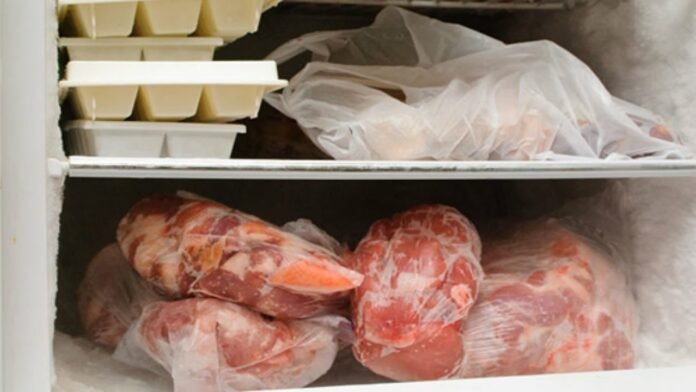The first thing to do after the sacrifice is to clean the meat well, removing blood, fat, and animal organs. Cutting the meat into smaller parts, among other benefits, makes it freeze faster, store more easily, and be used later conveniently. Small portions also defrost quickly, reducing the chances for bacteria to breed.
Using Proper Containers Meat
To avoid freezer burn resulting from exposure to air, keep the meat in air-tight containers; glass or high-quality plastic containers with tight lids are recommended for this purpose. The taste of meat can be interfered with if kept in metallic containers, which may react with it.
Freezing Meat
For better preservation, one should ensure no time is wasted before putting cleaned and cut meat into a freezing compartment. Please do so, especially during hot weather, to avoid rotting due to delay in freezing. Those with large quantities may acquire deep freezers designed for long-term storage as they work better than ordinary ones.
Freezer Organisation
Ensure the proper organization of your freezer to maximize space utilization. Each container should be labeled indicating the date of storage for easy tracking of time taken by the beef while in store. Arrange that older stock is consumed first, following what is commonly referred to as a first-in-first-out method.
Alternative Preservation Methods
Boiling and Storing
One way of increasing shelf life after killing bacteria is boiling it before keeping it under refrigeration. The idea here is to boil until partially cooked and then cool prior to freezing, which enables quick meal preparations at a later date.
Marination
Flavouring and tenderizing can be improved through marinating before being put into a deep freeze. What you need is your favorite spices, plus oil or vinegar. Coat all sides properly, then pack within air-sealed bags or jars; this accelerates readiness for fast cooking, thereby saving much preparation time when needed later on.
Tips for Maintaining Meat Quality
Temperature Control—The freezing point should be maintained at 18°C (0°F) or lower to ensure meat remains in good condition. If temperatures fluctuate, slight thawing followed by refreezing may occur, negatively affecting texture and taste.
Avoid Overloading the Freezer
Insufficient air circulation due to overcrowding can lead to uneven freezing, which can lead to spoilage risks. Leave some space around containers for proper airflow during storage.


